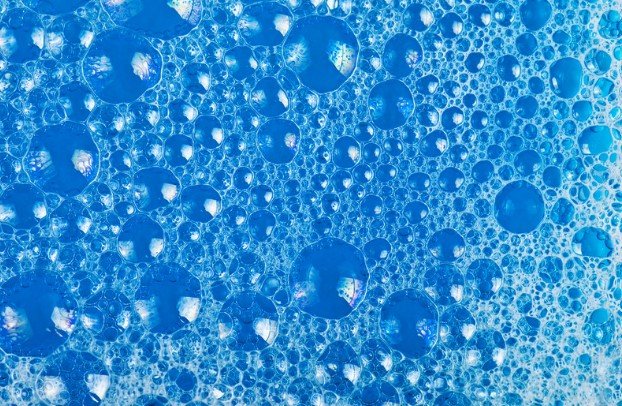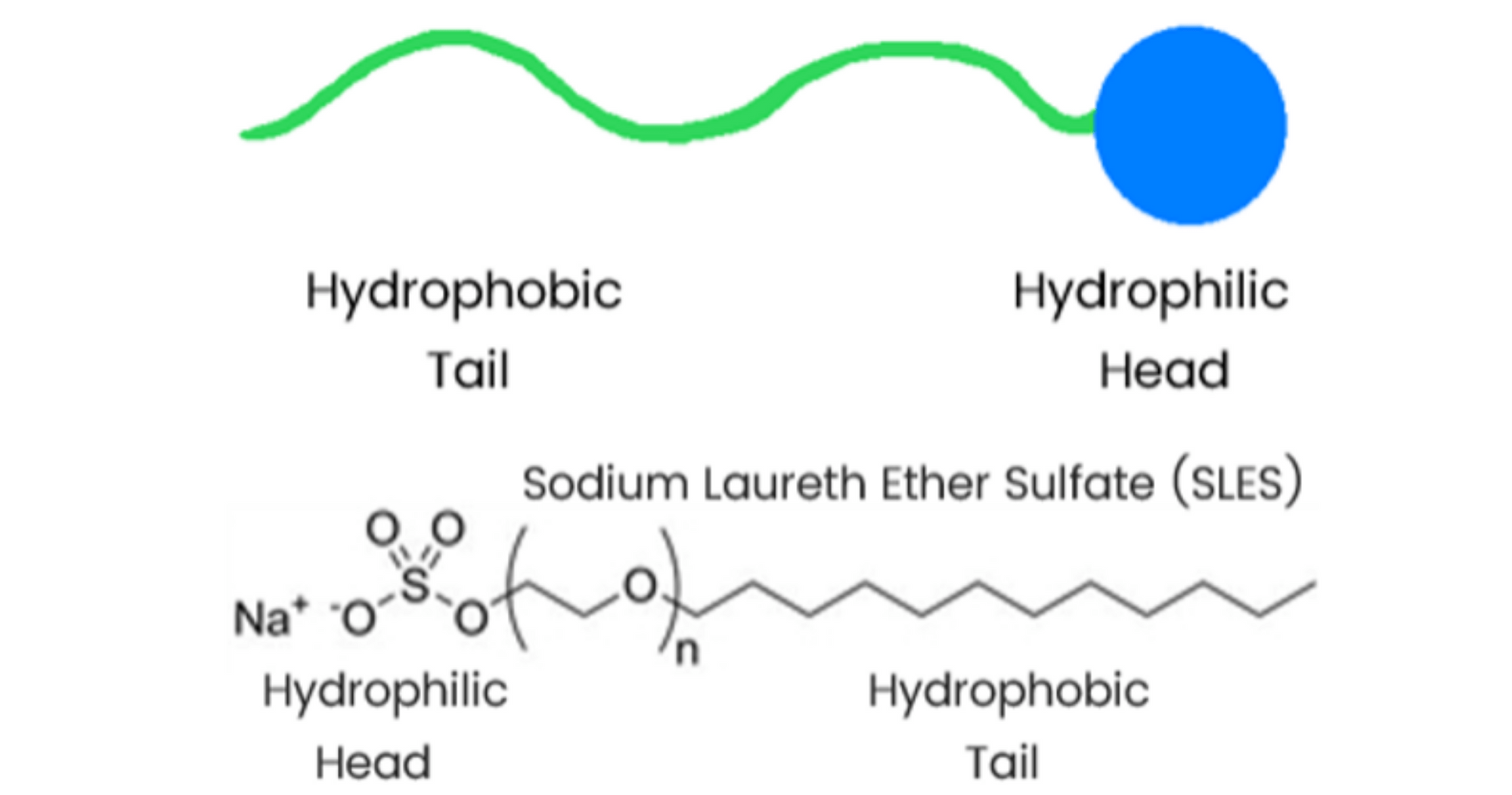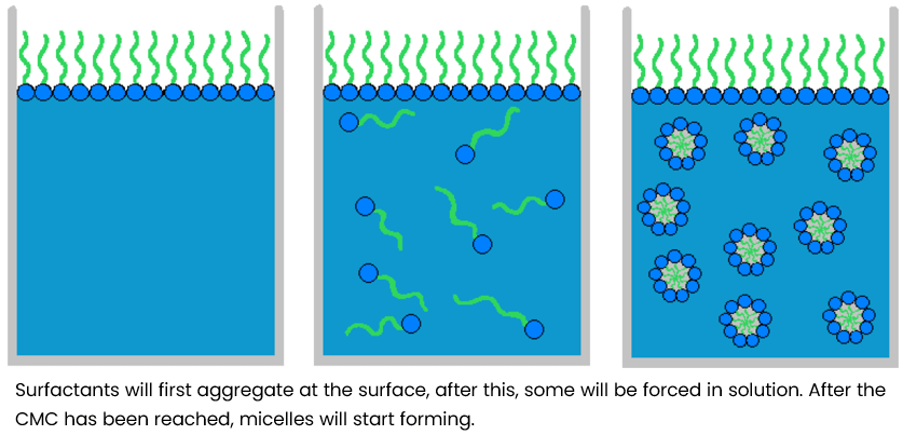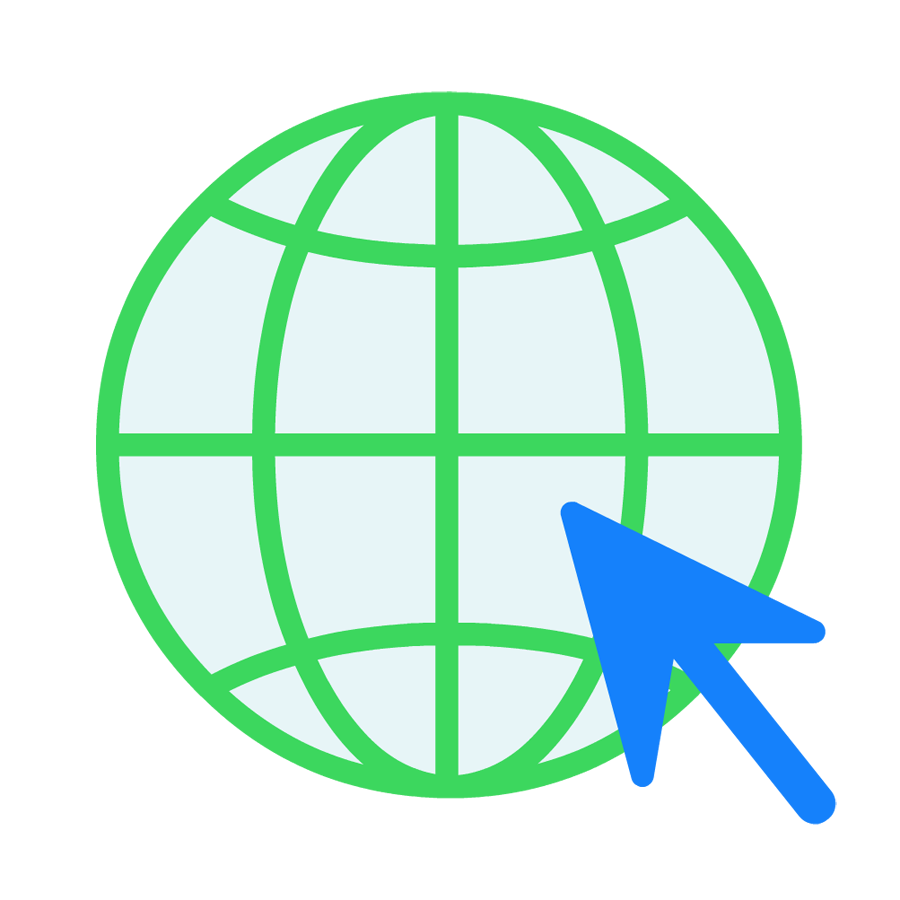
Surfactants part 1 - What is a surfactant?
1. Introduction
In this series of blogs about surfactants we will take a look at the basics behind one of the most commonly used ingredients in the personal care and cleaning industries. In this first part we will begin by exploring what a surfactant is, followed by how they work. In the next parts of this blog, we will look at the four surfactant groups (anionic, cationic, nonionic, amphoteric) and some common subgroups of surfactants. We will also take an in-depth look at natural surfactants and eco-friendly alternatives.
2. What is a surfactant?
Surfactants are among the most commonly used ingredients in the personal care industry. From make-up preparations to body washes or shaving foam, and from wet wipes to conditioners, almost all cosmetic preparations and products contain one or more surfactant. The cleaning industry is also known to widely use surfactants, but the use of surfactants is not limited to the cleaning and personal care industries. Surfactants are used widely in industries like paints and coatings, pharmaceuticals, agrochemicals, industrial chemistry, and oil mining, just to name a few. While there are many, many different surfactants, there are some that almost everyone will recognize (e.g., Sodium Lauryl Ether Sulfate (SLES) and Sodium Lauryl Sulfate (SLS)) and there’s surfactants that have exotic names like Sarcosinate or amine oxides. Whatever the surfactant molecule is, they all work in a similar manner, and we will discuss a wide range of them in this series of blog posts.
Surface active agents (surfactants) are added to formulations for a variety of reasons. Anionic surfactants (negative charge) are frequently added for their effective cleansing or foaming characteristics, and cationic surfactants (positively charged) for their conditioning properties. Then there are non-ionic surfactants (no charge) and amphoteric surfactants (amphiphilic molecules) that are often used in combination with other surfactants to boost their properties. Some are used solely to improve cleansing, others are used to emulsify an active agent, and then there are some that are only used to stabilize the formulation or improve the viscosity. These may all seem like vastly different functions, but they all rely on one simple mechanism; one simple trick that works by lowering the surface tension of an often-aqueous solution that allows all these different compounds to apply their different characteristics to a formulation.

Surface active agents all work by lowering the surface tension of liquids. While there are a lot of different types of surfactants, they all share the same basic chemical structure that makes them capable of doing so. Surfactants generally consist of two parts:
- A hydrophilic head: this often small part of the molecule loves water.
- A hydrophobic tail: this part, often a long tail, is water waiting.
3. How do surfactants work
Now that we know what surfactants look like, let’s talk about how they work. When reading about surfactants on the internet you will often read things like, surfactants reduce surface tension, or interfacial tension, or even surface and interfacial tension. While these words are sometimes used interchangeably, it is important to make the proper distinctions to prevent confusion.
3.1. Surface tension & interfacial tension
The difference between these two forms of tension lies in what the tension is between. Imagine a beaker with a liquid. The top ‘’layer’’ of the liquid, is in contact with the air, which causes there to be a tension on the water, this is called the surface tension. In other words, surface tension looks at a liquid and a gas. Now imagine you add another liquid or a solid to the beaker of water. These new substances will also have an attraction toward the liquid, and this tension is called the interfacial tension. This interfacial tension can be between two liquids, a liquid and a solid, or even a solid and a gas.
Some surfactants are great oil/water surfactants and others are great water/oil surfactants. At the same time, some work better on a liquid/liquid interface, while others work better on a liquid/solid interface. It is important to know that there is a difference and, in broad strokes, what that difference is. However, it is also not the point of this blog; therefore, we’ll refer to both surface and interfacial tension as surface tension, from now on.
3.2. The workings of surfactant molecules
Surfactant molecules have a hydrophilic head and a hydrophobic tail. This structure makes them behave in a certain way, and this is what allows them to be so useful in such a wide variety of formulations.
The surfactant molecules have two parts, and they want to orient themselves in the way that is the best for both parts of the molecule. This means that, ideally, the hydrophilic part is in the water and the hydrophobic region is out of the water. When adding surfactants to water, the surfactants will first aggregate on the surface with the tails sticking up out of the water. After a certain surfactant concentration has been reached, they won’t all be able to have their tails sticking up out of the water anymore and some of them will be forced underwater, into the solution. If more surfactant is added, the Critical Micelle Concentration (CMC) will be reached. Above this surfactant concentration, the surfactant molecules in the solution will form micelles. Micelles are small bubbles where the surfactants align with their hydrophilic heads on the outside facing the water, and their hydrophobic groups on the inside, within the bubble created by the hydrophilic head group. The heads act as a shield against the water for the tails. It is important to note that the CMC will almost always be reached even with very small amounts of surfactants.

The ability to form micelles are what gives surfactants the ability to act as a detergent, emulsifier, and more. This is because the micelles can pick up the things that normally won’t dissolve in the water. Whether those things are grease or dirt that need to be removed, or whether it’s an active agent or an oil that needs to be emulsified, micelles allow for both.
3.3. Cationic surfactants
Surfactants with a positive charge have a slightly different purpose. They are often conditioners. After washing with soap, the skin or hair is often negatively charged. Negative charges repel each other, this is often most visible in hair, fly-away hairs. To counter this, a cationic surfactant attaches itself to the hair shaft, making the charge neutral. This prevents fly-away hair and makes the hair feel softer.
4. What is the purpose of surfactants?
If you are familiar with surfactants, then the term ‘Hydrophilic Lipophilic Balance’ (HLB) may sound familiar. This is a slightly outdated way of separating different functions of surfactants by looking at the different regions of a surfactant molecule. The hydrophilic head and hydrophobic tail are both assigned a value. These numbers can then be used to calculate the HLB. The HLB scale ranges from 0 to 18. 0-6 refers to hydrophobic (oil soluble) molecules, 7-10 refers to water dispersible molecules, and 11-18 refers to hydrophilic (water soluble) molecules. The HLB scale looks roughly like this:
- 2-3: Antifoaming agents
- 3-6: Water in oil emulsifiers
- 7-9: Wetting and spreading agents
- 8-16: Oil in water emulsifiers
- 13-15: Detergents
- 15-18: Solubilizing agents
The most relevant functions for us are detergents (cleansing/cleaning/degreasing agents). Surfactants in this category lift dirt, grime, oil, grease, and other foreign particles that are insoluble in water off of a surface. Surfactants excel at this because of their ability to create micelles. All the unwanted parts are easily taken up by the micelles, which are then taken away by water. Another relevant group are the emulsifiers, dispersing agents, and solubilizers. Solubilizers are capable of completely solubilizing small amounts of ingredients. Emulsifiers create an emulsion, a cloudy solution in which the emulsified ingredients are floating. A Dispersing agent works in much the same way, it disperses ingredients, it keeps them from sticking together, also giving a cloudy solution. Emulsifying and dispersing surfactants are often also frequently usable as stabilizers, or viscosity controllers. The last relevant function is as a spreading agent or a wetting agent. Surfactants used for this end allow for a product like a skin moisturizer to be spread out more easily. A wetting agent usually refers to the same, but for spreading out a product over a countertop or a wall. Surfactants with these properties can act as a lubricant that excels at reducing surface tension.
5. Wrap up
To conclude, surfactants (surface active agents) are among the most commonly used cleaning and personal care ingredients. They are used in an enormous variety of different applications, ranging from body washes and shampoos to moisturizers and make-up products and even to industrial & institutional cleaning products. There are so many different use cases because surfactants themselves vary a lot. Some are excellent at cleaning and removing dirt, grease and unwanted particles, others are great at emulsifying and stabilizing a mixture. What they all have in common is their basic structure which almost always boils down to a hydrophobic region and a hydrophilic part.
In Surfactants part 2 - Types of surfactants of this blog series, we will discuss the different types of surfactants. In Surfactants part 3 - Surfactant subtypes we will talk in-depth about the different surfactant subtypes. In the last part of this blog, Surfactants part 4 - Natural surfactants we will look into natural surfactants and look into what makes them green and eco-friendly compared to their traditional counterparts.
Questions, comments, thoughts?

Job van Eijndhoven
 +31622626424
+31622626424
 job@ingrecore.com
job@ingrecore.com

